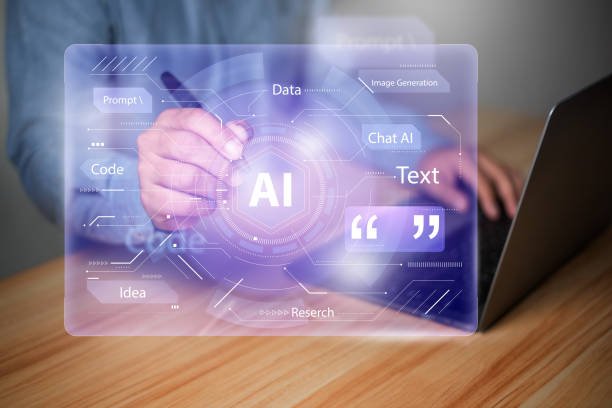What is an AI Robot? Definition, History, and Key Concepts
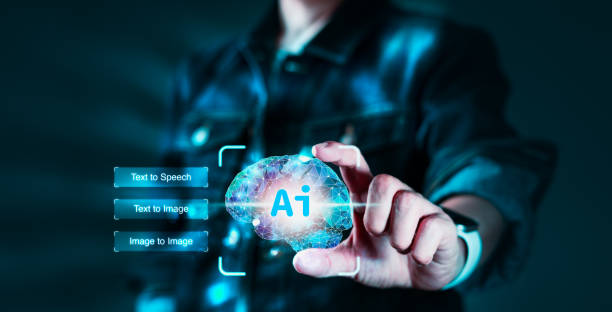
What is an AI Robot?
#Artificial_Intelligence_Robot (AI Robot) is a combination of two distinct, yet related fields: #Artificial_Intelligence and #Robotics.
In other words, an #AI_robot is a robot that, using artificial intelligence algorithms and techniques, is capable of performing tasks that typically require human intelligence.
These tasks can include learning, reasoning, problem-solving, pattern recognition, natural language understanding, and decision-making.
To better understand this topic, it’s essential to first look at the definition and history of each of these two fields.
Artificial Intelligence (AI) is a branch of computer science that seeks to create machines that can perform tasks requiring human intelligence.
This definition is broad and includes a wide range of techniques and algorithms, such as Machine Learning, Artificial Neural Networks, Natural Language Processing (NLP), and Computer Vision.
The ultimate goal of artificial intelligence is to create systems that can think, learn, and make decisions independently.
Robotics is a branch of engineering that deals with the design, construction, operation, and application of robots.
Robots are typically defined as machines that can perform tasks automatically or semi-automatically.
These tasks can include moving objects, performing repetitive work, operating in hazardous environments, and providing services to humans.
Robots usually have sensors that allow them to perceive their surroundings and actuators that enable them to interact with the environment.
History of AI Robots: The idea of combining artificial intelligence and robotics dates back to the early decades of these two fields.
However, significant advancements in this area have been made in recent years with the development of advanced artificial intelligence algorithms and the reduction in the cost of robotic hardware.
Today, AI robots are used in a wide range of industries and applications, including manufacturing, healthcare, logistics, agriculture, and customer service.
In summary, an #AI_robot is a machine that, using artificial intelligence, is capable of performing tasks that require human intelligence.
These robots can learn, reason, solve problems, and interact with their environment.
The development of #AI_robots has had a profound impact on human lives and various industries, and this impact is expected to grow further in the future.
Using an AI robot can help us perform our tasks.
Does your company’s website perform as well as your brand deserves? In today’s competitive world, your website is your most important online tool. Rasaweb, specializing in professional corporate website design, helps you to:
✅ Gain customer credibility and trust
✅ Convert website visitors into customers
⚡ Get a free consultation!
Types of AI Robots Based on Application and Architecture
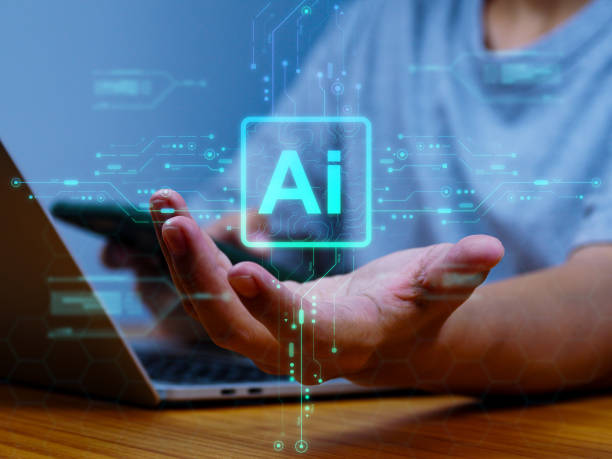
Types of AI Robots
Artificial intelligence robots can be categorized based on various criteria.
One of the most common methods is categorization based on their application.
In this method, robots are divided into categories such as industrial robots, service robots, medical robots, and military robots.
Industrial Robots: These robots are used in factory production lines for repetitive, dangerous, or high-precision tasks.
Welding, painting, packaging, and assembling parts are among the tasks these robots perform.
Industrial robots can perform work with high efficiency and minimal errors.
Service Robots: These robots are designed to provide services to humans in various environments.
Smart vacuum cleaners, waiter robots, educational robots, and guard robots are examples of this category.
These robots can assist people with daily tasks or operate in hazardous or inaccessible environments for humans.
Medical Robots: These robots are used in hospitals and treatment centers for surgical operations, patient rehabilitation, or care.
Surgical robots, rehabilitation robots, and nursing robots are examples of this category.
These robots can increase the precision and safety of surgical operations, accelerate patient rehabilitation, and reduce the workload of nurses.
Military Robots: These robots are used on the battlefield for tasks such as reconnaissance, bomb disposal, equipment transportation, or even direct engagement with the enemy.
Drones, ground robots, and underwater robots are examples of this category.
The use of #AI_robots in this field can save human lives and increase the effectiveness of military operations.
In addition to categorization by application, robots can also be categorized by their architecture.
In this method, robots are divided into categories such as mobile robots, stationary robots, and hybrid robots.
Mobile robots are capable of moving in the environment, while stationary robots are fixed in one location.
Hybrid robots combine features of both types.
Ultimately, choosing the appropriate type of #AI_robot depends on the specific needs and requirements of each application.
With technological advancements, new types of robots with more advanced capabilities are expected to emerge.
#AI_robots are still progressing.
The Most Important Components of an AI Robot: Hardware and Software

Main Components of an AI Robot
An #AI_robot consists of two main parts: hardware and software.
Hardware includes the physical components of the robot that perform various tasks such as movement, sensing, and information processing.
Software includes the algorithms and computer programs that enable the robot to think, learn, and make decisions.
Robot Hardware:
* Body: The main structure of the robot that houses other components.
The body material is usually metal, plastic, or composite materials.
* Motors and Actuators: Used to move the robot and its components.
There are different types of motors such as DC motors, servo motors, and stepper motors.
* Sensors: Used to collect information from the surrounding environment.
There are different types of sensors such as tactile sensors, vision sensors, audio sensors, and temperature sensors.
* Processor: The brain of the robot, responsible for processing information and controlling the robot’s functions.
Processors can be microcontrollers, single-board computers, or industrial computers.
* Power Source: Supplies the necessary energy to the robot.
Batteries, adapters, and fuel cells are common power sources.
Robot Software:
* Operating System: The software platform on which other programs run.
Robotic operating systems like ROS (Robot Operating System) provide features such as hardware management, inter-component communication, and programming capabilities.
* Artificial Intelligence Algorithms: Used for problem-solving and decision-making.
Machine learning algorithms, artificial neural networks, natural language processing, and computer vision are common algorithms in robotics.
* Applications: Designed to perform specific tasks.
These programs can include motion control programs, image processing programs, pattern recognition programs, and user interaction programs.
In designing an #AI_robot, the appropriate selection of hardware and software components is of high importance.
This choice should be made based on the specific needs and requirements of each application.
For example, an industrial robot working on a production line requires robust hardware and precise software, while a service robot working at home might need lighter hardware and more user-friendly software.
The table below lists some common hardware and software components in AI robots along with their applications:
| Component | Type | Application |
|---|---|---|
| Motor | DC, Servo, Stepper | Movement of the robot and its components |
| Sensor | Tactile, Vision, Audio, Temperature | Collecting information from the environment |
| Processor | Microcontroller, Single-board computer | Processing information and controlling the robot |
| Operating System | ROS | Hardware and software management |
| AI Algorithm | Machine Learning, Neural Networks | Problem-solving and decision-making |
With technological advancements, more advanced hardware and software components are expected to be seen in AI robots.
These advancements can enable robots to perform more complex tasks and operate in more diverse environments.
AI robots will play a more vital role in the near future.
Key Artificial Intelligence Algorithms in Robotics: Machine Learning, Computer Vision, and NLP

Key Artificial Intelligence Algorithms in Robotics
Artificial intelligence algorithms play a crucial role in the performance of #AI_robots.
These algorithms enable robots to learn, reason, solve problems, and interact with their environment.
In this section, we will explore three key artificial intelligence algorithms that are widely used in robotics: Machine Learning, Computer Vision, and Natural Language Processing (NLP).
Machine Learning: Machine learning enables robots to learn from data without explicit programming.
These algorithms identify patterns and relationships within data and use this information to improve their performance.
There are different types of machine learning algorithms, including Supervised Learning, Unsupervised Learning, and Reinforcement Learning.
Machine learning can help robots operate in complex environments.
Computer Vision: Computer vision enables robots to understand images and videos and use this information for object identification, facial recognition, navigation, and other tasks.
These algorithms use image processing techniques to identify patterns in images and use these patterns to understand the image content.
Natural Language Processing: Natural language processing enables robots to understand human language and interact with humans in natural language.
These algorithms use language analysis techniques to understand the structure and meaning of sentences and use this information to answer questions, execute commands, and perform other tasks.
These algorithms are typically combined to enable #AI_robots to perform more complex tasks.
For example, a service robot might use computer vision to identify objects and people, natural language processing to understand user commands, and machine learning to improve its performance over time.
The combination of these three algorithms allows the robot to intelligently interact with its environment and automatically perform various tasks.
#AI_robots can perform complex tasks using these algorithms.
Are you losing customers due to your e-commerce site’s outdated appearance or slow speed? Rasaweb’s expert team solves these problems with professional e-commerce website design!
✅ Increase customer trust and brand credibility
✅ Stunning speed and excellent user experience
Get a free consultation with Rasaweb now ⚡
Challenges Facing the Development and Use of AI Robots
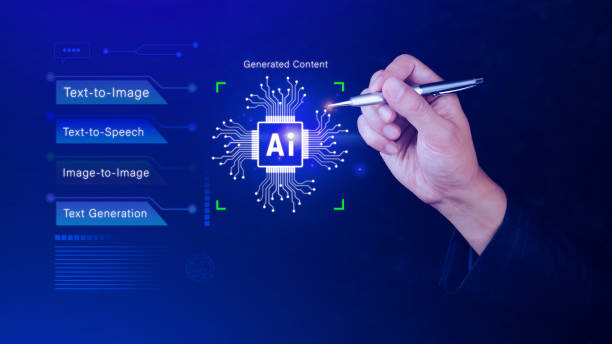
Challenges in AI Robot Development
The development and use of #AI_robots face numerous challenges.
These challenges include technical, ethical, social, and economic issues.
Technical Challenges: One of the most significant technical challenges is creating robots that can operate in unstructured and unpredictable environments.
Today’s robots are typically designed to work in controlled environments with specific conditions.
However, in many applications, robots must be able to encounter dynamic and variable environments with unexpected conditions.
For example, a service robot working at home must be able to encounter unexpected obstacles such as toys, furniture, and pets.
Ethical Challenges: The use of #AI_robots raises important ethical questions.
One such question is accountability for the robots’ performance.
If a robot causes harm, who is responsible? The programmer, the manufacturer, or the user? Another question is privacy.
Robots can collect a lot of information about people’s lives.
How can this information be protected?
Social Challenges: Widespread use of #AI_robots can lead to job losses.
Robots can automate many tasks that were previously performed by humans.
This can lead to increased unemployment and social inequality.
Economic Challenges: The development and use of #AI_robots require significant investment.
This can hinder access to this technology for small and medium-sized companies.
Additionally, the cost of maintaining and repairing robots can also be high.
To overcome these challenges, cooperation between researchers, engineers, policymakers, and society is needed.
By developing new technologies, enacting appropriate laws and regulations, and training the workforce, the benefits of #AI_robots can be realized, and potential risks can be prevented.
With proper management and the help of robotics ethics, we can overcome these challenges.
Applications of AI Robots in Various Industries
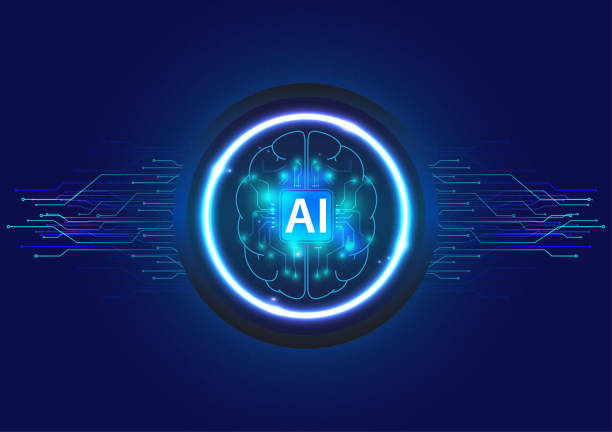
Applications of AI Robots
#AI_robots have widespread applications in various industries.
These industries include manufacturing, healthcare, logistics, agriculture, and customer service.
Manufacturing: In the manufacturing industry, robots are used for repetitive, dangerous, or high-precision tasks.
Welding, painting, packaging, and assembling parts are among the tasks that robots perform in this industry.
The use of robots in manufacturing can lead to increased productivity, reduced costs, and improved product quality.
Healthcare: In the healthcare industry, robots are used for surgical operations, patient rehabilitation, or care.
Surgical robots, rehabilitation robots, and nursing robots are examples of this category.
These robots can increase the precision and safety of surgical operations, accelerate patient rehabilitation, and reduce the workload of nurses.
Logistics: In the logistics industry, robots are used for moving goods, warehousing, and delivering shipments.
Drones, warehouse robots, and delivery robots are examples of this category.
The use of robots in logistics can lead to increased speed and efficiency, reduced costs, and improved customer service.
Agriculture: In the agriculture industry, robots are used for planting, cultivation, and harvesting crops.
Planting robots, spraying robots, and harvesting robots are examples of this category.
The use of robots in agriculture can lead to increased productivity, reduced water and fertilizer consumption, and improved product quality.
Customer Service: In the customer service industry, robots are used to answer customer questions, provide information, or solve their problems.
Chatbots, telephone robots, and reception robots are examples of this category.
The use of robots in customer service can lead to improved customer satisfaction, reduced costs, and increased efficiency.
As science advances, #AI_robots will play a greater role in our lives.
The Future of AI Robots: Predictions and Key Trends

The Future of AI Robots
The future of #AI_robots is bright and full of potential.
It is predicted that in the coming years, we will see significant advancements in this field, and robots will play a more important role in human lives.
Predictions:
* Increased Robot Capabilities: Future robots are expected to have significantly more capabilities than today’s robots.
They will be able to perform more complex tasks, interact more intelligently with their environment, and communicate with humans in natural language.
* Reduced Costs: With technological advancements and increased production, the cost of manufacturing robots is expected to decrease.
This can lead to greater access to this technology for companies and individuals.
* Expansion of Applications: The applications of robots are expected to expand across various industries.
Robots will also be used in fields such as education, entertainment, sports, and art.
* Development of Self-Aware Robots: One of the long-term goals in artificial intelligence is the creation of self-aware robots.
Self-aware robots will be able to think, learn, and make decisions independently.
Although this goal is still far off, recent advancements in artificial intelligence suggest that it is not impossible.
Key Trends:
* Ubiquitous AI: Artificial intelligence will be increasingly integrated into robots.
Robots will use advanced AI algorithms for learning, reasoning, problem-solving, and interacting with their environment.
* Human-Robot Collaboration: Robots and humans will increasingly collaborate.
Robots will perform repetitive and dangerous tasks, while humans will focus on creative tasks requiring critical thinking.
* Personal Robots: Personal robots will soon become a part of people’s daily lives.
These robots can help individuals with household chores, caring for the elderly, or educating children.
Personal #AI_robots will soon be with everyone.
The future of #AI_robots is very exciting.
With technological advancements and new innovations, robots are expected to play a more important role in human lives and help improve the quality of life.
Ethical and Legal Considerations in the Design and Use of AI Robots
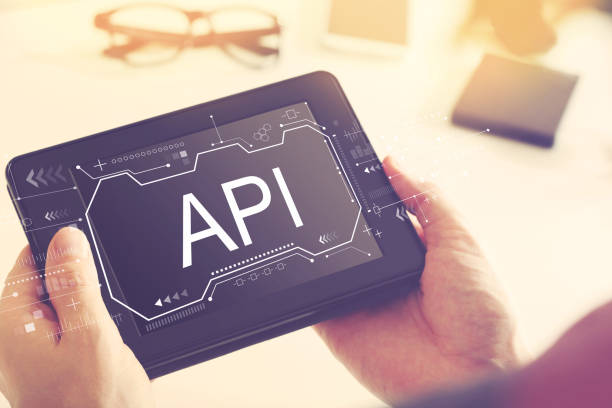
Ethical and Legal Considerations for AI Robots
Along with the accelerating advancement of #AI_robots, attention to ethical and legal considerations in their design and use becomes particularly important.
These considerations include various issues such as accountability, privacy, security, and impact on employment.
Accountability: One of the most important ethical issues concerning robots is accountability for their performance.
If a robot causes harm, who is responsible? The programmer, the manufacturer, the user, or the robot itself? This question still has no definitive answer and requires further discussion and deliberation.
Some experts believe that a specific law should be enacted for robot accountability.
Privacy: Robots can collect a lot of information about people’s lives.
This information can include personal details, behavioral habits, and even emotions.
How can this information be protected and prevented from misuse? This question requires the enactment of strict laws and regulations regarding privacy.
Security: Robots can be vulnerable to cyberattacks and be hacked.
If a robot is hacked, it can be used to perform malicious actions.
How can robots be protected against cyberattacks? This question requires the development of advanced security methods.
Impact on Employment: Widespread use of #AI_robots can lead to job losses.
Robots can automate many tasks that were previously performed by humans.
This can lead to increased unemployment and social inequality.
How can these negative effects be prevented? This question requires careful planning and policy-making regarding employment.
The table below lists some important ethical and legal considerations for AI robots, along with proposed solutions for addressing them:
| Ethical/Legal Consideration | Proposed Solution |
|---|---|
| Accountability | Enactment of specific laws for robot accountability |
| Privacy | Enactment of strict laws and regulations regarding privacy |
| Security | Development of advanced security methods |
| Impact on Employment | Careful planning and policy-making regarding employment |
Given the importance of these issues, it is necessary to seriously consider the ethical and legal implications of #AI_robots before their widespread development and use.
#AI_robots should serve humanity, not work against it.
Research shows that 80% of customers trust companies with professional websites more. Does your current site earn this trust?
With Rasaweb’s corporate website design services, solve the problem of lack of customer trust and a weak online image forever!
✅ Create a professional image and increase customer trust
✅ Attract more sales leads and grow your business
⚡ Get a free consultation
How to Build an AI Robot? A Step-by-Step Guide
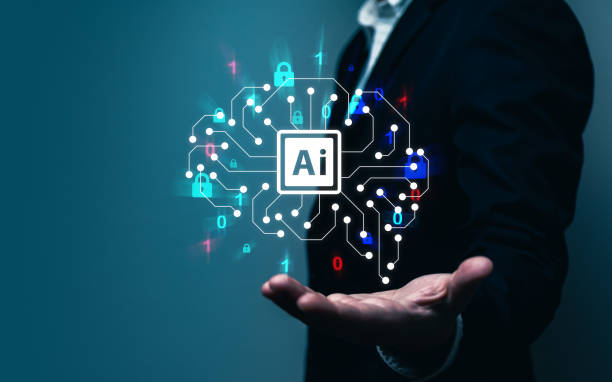
Guide to Building an AI Robot
Building an #AI_robot can be an exciting and challenging project.
In this section, we provide a step-by-step guide for building a simple robot using inexpensive electronic components and open-source software.
Step One: Define the project goal.
Before starting anything, you need to define your project’s goal.
What do you want your robot to do? Do you want to build a simple line-following robot or a light-tracking robot?
Step Two: Select electronic components.
Based on the project goal, you need to select the necessary electronic components.
These components can include:
* Microcontroller (e.g., Arduino)
* Motors
* Sensors (e.g., IR sensors, Ultrasonic sensors)
* Battery
* Breadboard
* Jumper wires
Step Three: Design the electronic circuit.
After selecting the components, you need to design your robot’s electronic circuit.
You can do this using circuit design software like Fritzing.
Step Four: Program the microcontroller.
After designing the circuit, you need to program your robot’s microcontroller.
For this, you can use programming languages like C++ or Python.
Step Five: Assemble the components.
After programming the microcontroller, you need to assemble the electronic components on the breadboard and perform the necessary wiring.
Step Six: Test and troubleshoot.
After assembling the components, you need to test your robot and troubleshoot any issues that arise.
You can do this using electronic testing tools like a multimeter.
Step Seven: Improve and develop.
After testing and troubleshooting, you can improve and develop your robot.
You can add new functionalities or optimize its design.
Building an #AI_robot can be a fun and useful hobby.
Educational Resources and Software Libraries for AI Robot Development

Educational Resources and Software Libraries
Developing #AI_robots requires knowledge and skills in various fields, including electronics, programming, and artificial intelligence.
Fortunately, there are abundant educational resources and software libraries available to assist developers in this area.
Educational Resources:
* Online Courses: Various websites such as Coursera, Udacity, and edX offer online courses in robotics and artificial intelligence.
These courses can help you acquire the necessary knowledge and skills to develop robots.
* Books: Many books are available on robotics and artificial intelligence that can help you learn various concepts and techniques.
* Online Forums and Groups: There are many online forums and groups active in robotics and artificial intelligence.
Joining these forums can help you connect with other developers and benefit from their experiences.
Software Libraries:
* ROS (Robot Operating System): An open-source software framework that provides many features for robot development.
ROS includes a set of tools, libraries, and conventions that help developers easily develop complex robots.
* OpenCV (Open Source Computer Vision Library): An open-source software library that provides many features for image processing and computer vision.
OpenCV includes a set of algorithms and functions that help developers easily develop computer vision applications.
* TensorFlow: An open-source software library that provides many features for machine learning.
TensorFlow includes a set of tools and APIs that help developers easily develop and train machine learning models.
* Keras: A high-level API for building neural networks that runs on TensorFlow, Theano, and CNTK.
Keras is a user-friendly and easy-to-learn API that helps developers quickly and easily develop complex neural networks.
By using these tools and resources, you can become a professional robotics developer.
By utilizing these educational resources and software libraries, you can acquire the necessary knowledge and skills for #AI_robot development and successfully complete your robotics projects.
Frequently Asked Questions
| Question | Answer |
|---|---|
| What is an AI robot? | An AI robot is a robot that uses artificial intelligence capabilities to understand its environment, reason, learn, and make decisions to perform complex tasks autonomously. |
| What is the main difference between a regular robot and an AI robot? | AI robots can learn and adapt to their environment, while regular robots typically operate based on fixed, pre-programmed instructions. |
| In what fields are AI robots used? | In fields such as industry (production lines), medicine (robotic surgeries), services (customer support, smart vacuum cleaners), exploration (space and underwater), and entertainment. |
| How do AI robots learn? | They acquire new skills by analyzing large datasets and identifying patterns through machine learning (Machine Learning) and deep learning (Deep Learning) algorithms. |
| Can AI robots have emotions? | Currently, no. They can identify or simulate emotions, but they do not experience real emotions like humans do. |
| What are the most important advantages of using AI robots? | Increased productivity, reduced human error, performing dangerous or repetitive tasks, and providing innovative and efficient services. |
| What challenges exist in developing AI robots? | The need for vast and high-quality data, algorithm complexity, ethical issues, cybersecurity, and high research and development costs. |
| Are AI robots dangerous to humans? | With adherence to safe design principles and ethical regulations, no. Concerns are primarily related to social and economic impacts such as changes in the job market. |
| What is an example of an AI robot in daily life? | Smart robotic vacuum cleaners (like Roomba) that autonomously map and clean homes, or smart voice assistants (like Siri and Alexa). |
| How is the future of AI robots predicted? | They are expected to become smarter, more autonomous, and capable of more complex interactions with humans, playing a more prominent role in industry, medicine, transportation, and daily life. |
And other advertising agency services by Rasaweb in the field of advertising
- Smart Website Development: A combination of creativity and technology for digital branding through precise audience targeting.
- Smart Customer Journey Map: Professional optimization to increase website traffic using marketing automation.
- Smart Marketing Automation: Designed for businesses seeking online growth through precise audience targeting.
- Smart Link Building: A professional solution for digital branding focusing on precise audience targeting.
- Smart Custom Software: A fast and efficient solution for customer acquisition focusing on marketing automation.
And over hundreds of other services in the field of internet advertising, advertising consultation, and organizational solutions
Internet Advertising | Advertising Strategy | Advertorials
Sources
Comprehensive Guide to AI Robots on DigiatoApplications of Artificial Intelligence in Robotics: ZoomitThe Future of Robotics with Artificial Intelligence – TabnakSmart Robots in Everyday Life – Bartarinha
? Are you ready to transform your business in the digital world? Rasaweb Afarin Digital Marketing Agency, specializing in SEO, online advertising, and user-friendly website design, is your trusted partner on the path to growth and success.
📍 Tehran, Mirdamad Street, next to the Central Bank, South Kazeroon Alley, Ramin Alley, No. 6

